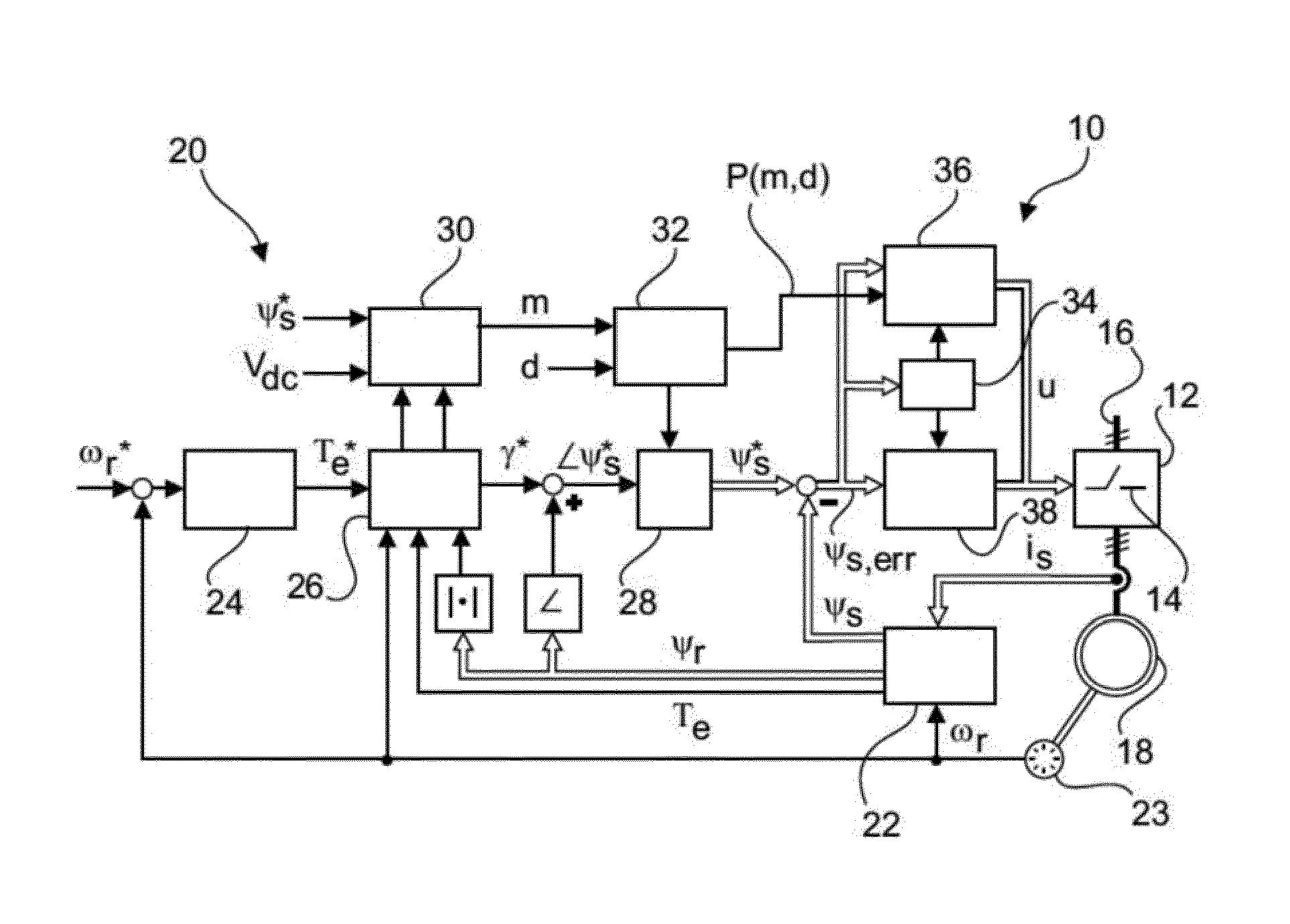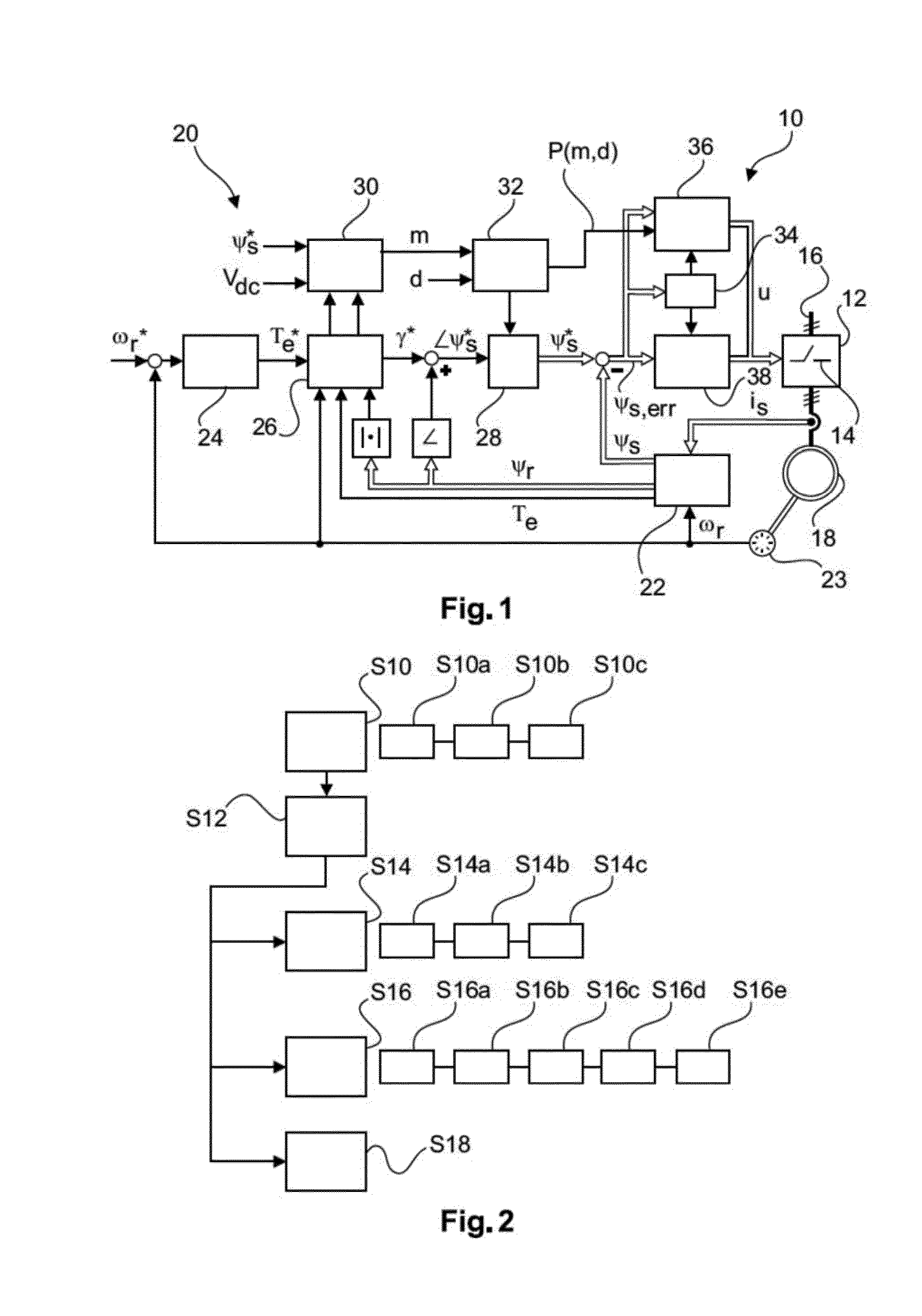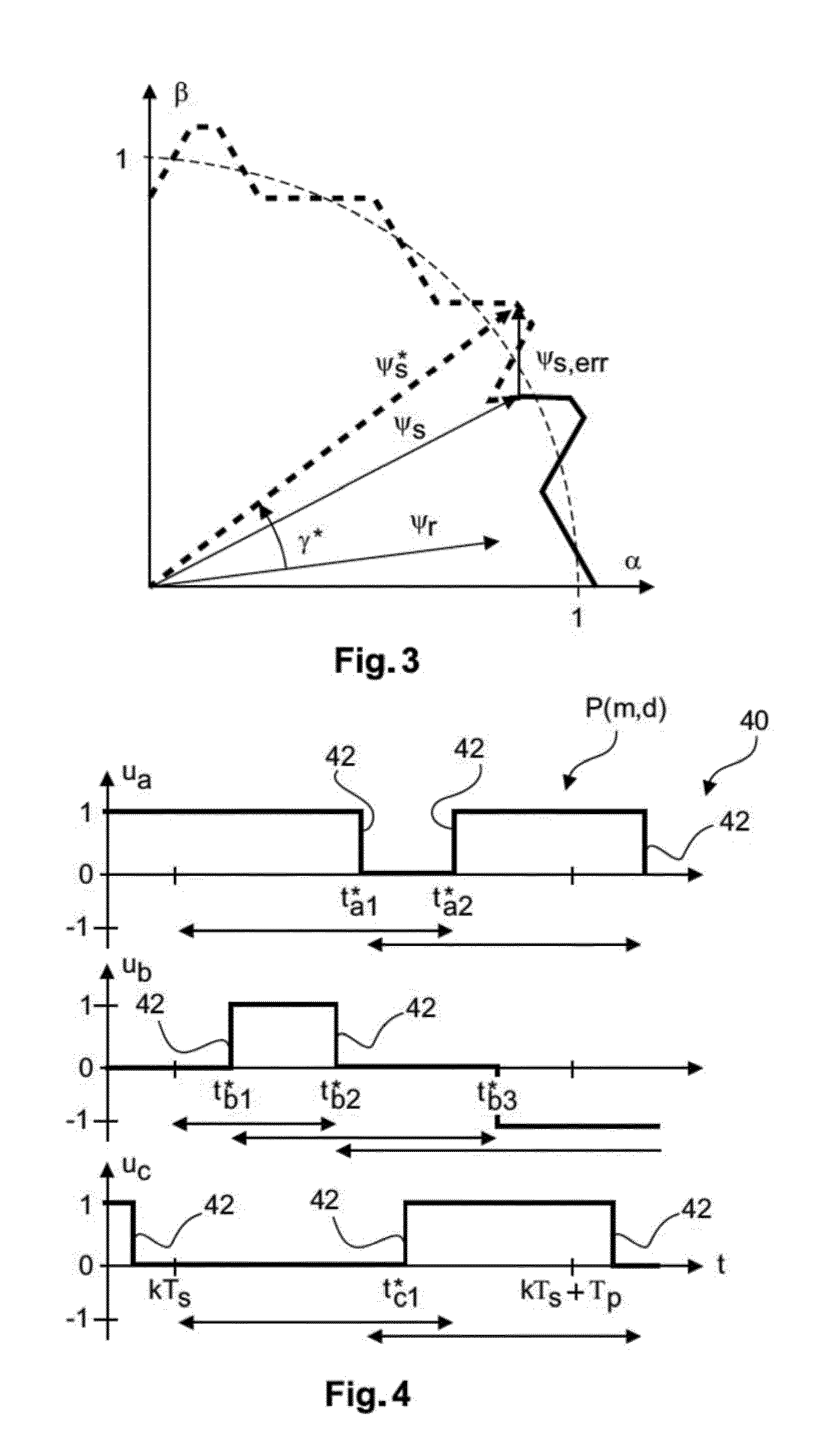Fast model predictive pulse pattern control
a pulse pattern and model technology, applied in the field of high-power electronics, can solve the problems of long initial time delay, long transient and harmonic excursion of currents, and the possibility of using optimized pulse patterns, and achieve the effects of low total harmonic distortion, fast elimination of large control errors, and high performan
- Summary
- Abstract
- Description
- Claims
- Application Information
AI Technical Summary
Benefits of technology
Problems solved by technology
Method used
Image
Examples
Embodiment Construction
[0018]It is an object of the invention to overcome the above-mentioned problems.
[0019]This object is achieved by the subject-matter of the independent claims. Further exemplary embodiments are evident from the dependent claims and the following description.
[0020]An aspect of the invention relates to a method for controlling an electrical converter. The electrical converter may be an inverter or an active rectifier. It may be an indirect or a direct converter. In particular, the converter may be a high power converter adapted for converting current with more than 100 A and / or 1000 V.
[0021]According to an embodiment of the invention, the method comprises the steps of: determining an error value based on a difference between an estimated output value and a reference output value, the estimated output value being based on measurements from the electrical converter; comparing the error value with an error band and in the case of the error value being within the error band, controlling th...
PUM
 Login to View More
Login to View More Abstract
Description
Claims
Application Information
 Login to View More
Login to View More - R&D
- Intellectual Property
- Life Sciences
- Materials
- Tech Scout
- Unparalleled Data Quality
- Higher Quality Content
- 60% Fewer Hallucinations
Browse by: Latest US Patents, China's latest patents, Technical Efficacy Thesaurus, Application Domain, Technology Topic, Popular Technical Reports.
© 2025 PatSnap. All rights reserved.Legal|Privacy policy|Modern Slavery Act Transparency Statement|Sitemap|About US| Contact US: help@patsnap.com



